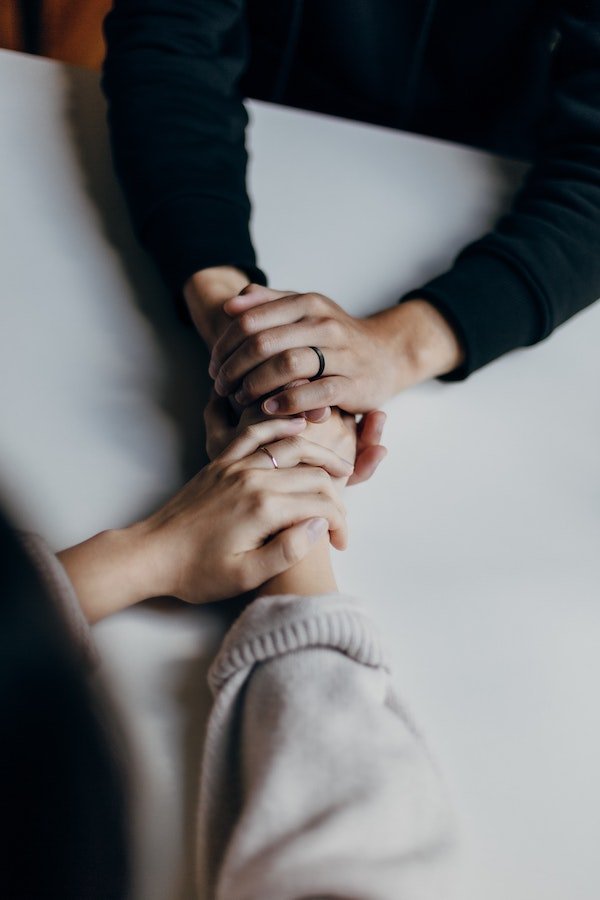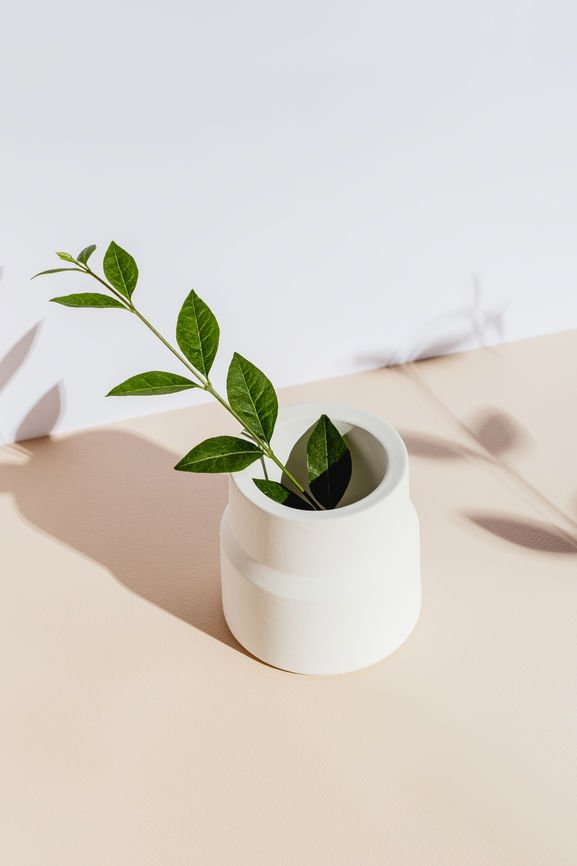
How I Stopped Feeling Ashamed About Self-Pleasure
There is the language of sex, and then there is the language of shame, and for most of my life, these two languages have been intertwined. Throughout my adolescence, sex was synonymous with secrecy, and not the good kind. This was especially true when sex looked like a woman exploring her own body—like me exploring my own body.
“Throughout my adolescence, sex was synonymous with secrecy, and not the good kind.”
I never learned about masturbation, let alone heard the word while growing up, not in my rural Christian corner of America. I only knew what it felt like, the whirlpool of pleasure and shame swirling in my belly as I explored my body in private. How can something feel both good and wrong? I often wondered, clasping my hands in prayer, pleading in the darkness of my bedroom for forgiveness. There was nothing more shameful than being alone with my nakedness, with my sexual desires.
For years, I was certain there was something wrong with me, that what I was doing was unhealthy and dirty, a belief rooted in virginity culture and purity messages. In the 1990s, abstinence-only education was the favored sex education in many parts of the United States. Teaching me what they believed to be right and good, my parents repurposed these messages at home around the dinner table.
Sex was to be saved for marriage, I was taught. As for touching your own body, exploring your own intimate areas? That was an act reserved for jokes passed around in the high school halls, boys snickering about secrets I shouldn’t know about. Masturbation, it seemed, was something people with penises did. And so I felt alone in my experience, an anomaly.
Years later, when my husband and I struggled with sex, I wondered if our problems were consequences for the times I’d masturbated as a teenager. A silly notion looking back, but a result of the shame that had rooted itself within me. I had needed someone to tell me my body—my sexual desires—were healthy and good. More than that, I had needed someone to tell me that my actions and desires were entirely average. I was not one woman experiencing arousal and pleasure. I was one of countless women—countless people of all ages, throughout both time and place—learning how to please their bodies, albeit in secret.
“I was one of countless women—countless people of all ages, throughout both time and place—learning how to please their bodies, albeit in secret.”
I reached a breaking point in my early 20s. I was desperate for a breakthrough, or at least an outlet and safe space to talk about my shame and how it always seemed to shadow me. I started going to therapy and reading recommended books about sex and women’s pleasure. I also began to have conversations about desire and arousal with close friends. To my surprise, I learned I was far from alone in my experience and feelings.
Sexual shame is something many of us have in common. Not everyone experiences it, but enough of us do. Shame doesn’t discriminate based on gender, language, or culture—though, in terms of masturbation, women have suffered significantly in feeling ashamed about our bodies.
In “Woman: An Intimate Geography,” Natalie Angier writes,
“Women are said to have lower sex drives than men, yet they are universally punished if they display evidence to the contrary—if they disobey their ‘natural’ inclinations towards a stifled libido.
How can we know what is ‘natural’ for us when we are treated as unnatural for wanting our lust, our freedom, the music of our bodies?”
As I’ve spent years unraveling the narratives I grew up with, I’ve wanted to find a better word for “masturbation.” While part of me has wished to reclaim it and shout from the rooftops that it’s something healthy and normal, I’ve also found myself agreeing with those who want to challenge the term and move away from its male- and penis-biased nature, as is common in media and pop culture.
“Self-pleasure” better expresses what masturbation has to offer, and it accurately alludes to the voluntary practice of caring for one’s sexual desires—it’s a complete reframing of how I used to view masturbation and pleasure as a teenager. Likewise, self-pleasure defines the act in terms of self-exploration as an embodied and present experience.
“Self-pleasure better expresses what masturbation has to offer, and it accurately alludes to the voluntary practice of caring for one’s sexual desires.”
Taking it one step further, mindful self-pleasure begins when we experience our bodies without judgment or expectation. We remain present in the mind and grounded in the physical experience, and our only goal is to focus on the moment and how our body feels.
Self-pleasure is beautiful in that it invites us to get acquainted with our physical selves. All bodies, intimate parts included, are different. Vulvas and penises come in an array of sizes, shapes, and colors. Moreover, every sex organ experiences stimulation and pleasure uniquely. For many of us, our understanding of our genitalia comes from dated textbooks, pop culture, and pornography. For example, various studies show that people of all genders struggle to correctly identify the vulva and the vagina. (Vagina 101 for anyone who needs it.)
Mindful self-pleasure opens us up to experiencing pleasure specific to our body, which often differs from our default masturbation patterns. We’re conditioned to experience sex (both partnered and solo) as linear, with orgasm being the goal. Because of this, we engage in self-pleasure using similar techniques. We rush to touch our most sensitive areas; we rely on specific fantasies; we resort to what we know.
“By slowing down and engaging in mindful touch, we can experience pleasure in new and exciting ways.”
While there’s nothing wrong with our favored methods or a self-quickie (a quick orgasm can be a remedy for stress and tension), mindful self-pleasure invites us into a slower and more intentional space. Like with mindful sex, there is no goal or measuring stick, and we can touch ourselves where it feels good, relishing moment-by-moment pleasure.
Think of it this way: When we assume we know the best way to masturbate, we ignore our body’s request to break old patterns and try something new. But by slowing down and engaging in mindful touch, we can experience pleasure in new and exciting ways—and, most importantly, shame-free ways. Here are a few tips:
Create a safe space. It may sound silly, but it can be helpful to “schedule” mindful self-pleasure into your day to ensure you have private time allocated to yourself. Then, create a safe and soothing space. A bedroom or bathroom is ideal for ultimate privacy. Candles, dim lighting, soft music, and skin oils can also be useful for setting to mood. Do what feels good for you.
Familiarize yourself with your body. If you feel comfortable, use a mirror to explore and acquaint yourself with your body. Learn about your erogenous zones and the lesser-known arousal points on your body. You may find yourself subconsciously falling into old touch patterns. When this happens, slow down and think about why it feels good. Is there another method you could try to increase pleasure? For alternative “technique” suggestions, I recommend OMGYes. This platform is a science-based tool that shares women’s collective masturbation stories and includes method tutorials.
Try out sex toys and lubricants. Lube isn’t only for intercourse and penetration. Use it with sex toys or on its own. I especially love these natural brands created for vaginal health and increased pleasure. If you’re not sure where to get started with shopping, consider visiting a feminist sex store for help.
Rely on resources. While one goal of mindful self-pleasure is to clear your mind and focus solely on the pleasure points of your body, resources can help set the mood and ignite arousal. Dipsea, for example, offers sexy audio stories to spark your imagination and heat things up.
Reclaiming the masturbation narrative and learning to accept my body and my desires as healthy and normal hasn’t been easy. But through the years, as I’ve continued having more conversions and worked to expand my worldview, the shame has lessened, especially as I embrace a more mindful approach.
Of course, self-pleasure isn’t for everyone, and that’s okay; everyone is different in their desires and needs. Like everything in sex, you get to consent—yes, even to yourself—and decide what feels right and comfortable for you.
“Like everything in sex, you get to consent—yes, even to yourself.”
Kayti Christian (she/her) is a Senior Editor at The Good Trade. She has a Master’s in Nonfiction Writing from the University of London and is the creator of Feelings Not Aside, a newsletter for sensitive people.





